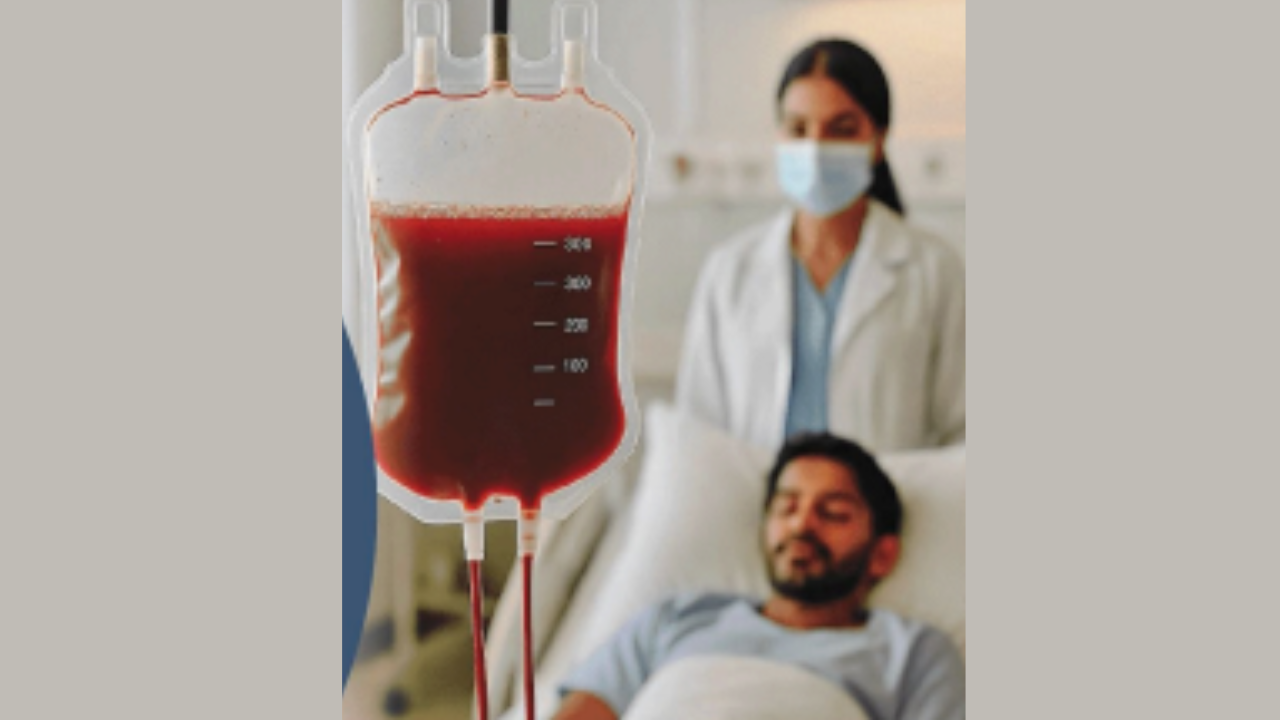On returning from college recently, Kolkata-based Anusha (name changed) – a thalassemia patient who got infected with HIV through a blood transfusion a few years ago – read a headline that shocked her.Two years after 14 children in Uttar Pradesh allegedly contracted HIV and hepatitis after receiving blood transfusions, five children suffering from thalassemia were tested HIV positive after receiving blood at Chaibasa Sadar Hospital in Jharkhand last month, the sixth case reported at another facility in the state.“At least I can afford the treatment,” says Anusha. “Many people who go to rural centers and government hospitals cannot do so.”Opposition leaders have claimed that six children in Ranchi and one in Koderma have been affected.For thalassemia patients – who are dependent on lifelong blood transfusions – the Jharkhand case has reopened an old wound.“We are sick and tired,” says lawyer Anubha Taneja Mukherjee. A thalassemia patient herself, she is member-secretary of the Thalassemia Patients Advocacy Group (TPAG), which has long been demanding a uniform national blood law and mandatory upgradation of screening technologies. “This is not just a failure of the system. This is a violation of the right to safe, life-saving care.”a system under investigationPreliminary investigations indicate that Chaibasa Blood Bank used fourth-generation ELISA tests, but not nucleic-acid amplification testing (NAAT), which can detect infection during a “window period” when the ELISA may fail.Five cases have been traced to the facility, whose license – according to local media reports – expires in 2023. While hospitals often operate under “deemed-continuity” rules during renovations, this case has raised questions about accountability, oversight, and quality control.Jharkhand health authorities have suspended senior officials and ordered a statewide inspection of blood banks, while the high court, taking suo motu cognizance, has sought data on surveillance, donor-camp protocols and blood-availability practices.Following a statewide inspection, on November 19, the Jharkhand High Court said that the licenses of 17 blood banks have been cancelled, and directed the state to set a clear timeline for adopting NAAT for blood testing. The court also observed that the investigation into the Chaibasa incident has been completed, but the report has not yet been placed on record.“This is not an isolated incident,” says Dr. Ishwar Gilada, secretary general of the People’s Health Organization (PHO), an NGO known for its work in HIV/AIDS awareness, prevention and treatment advocacy. “They reflect policy paralysis and administrative collapse.”Lessons from other statesThe tragedy comes as some states have attempted to create stronger shields around vulnerable patients.In Rajasthan, a health official says the state follows a two-tier protocol for people who require frequent blood transfusions.“For patients who require frequent blood transfusions, we first test by ELISA and then use NAAT to prevent blood-transmitted infections,” the official says. “We have been using NAAT for four years.” Rajasthan has started expanding NAAT to general patients in Jaipur and Udaipur, with a phased expansion planned in districts still relying only on Elisa. “NAAT should become universal for high-risk groups,” officials say.In UP, transfusion oversight is managed by the State Blood Transfusion Council, headed by Dr Geeta Aggarwal. “No case of contaminated blood transfusion has come to the notice of the council in the last 10 years,” she says. Uttar Pradesh follows the guidelines and SOPs issued by the National Blood Transfusion Council (NBTC, the central body that coordinates state blood transfusion councils) and cross-checks compliance, she says. “We reinforce the rational use of blood every three weeks in all blood banks, mandate testing for HIV, hepatitis B and C, malaria and syphilis, review data monthly, and conduct quarterly quality assessments.”She says UP has also created a digital monitoring tool with around 200 parameters, and adds that the Food and Drug Administration conducts at least one physical inspection a year.This is in stark contrast to the shortcomings exposed in Jharkhand.decades long fightIndia’s fight for safe blood began in the late 1980s, when PHO’s PIL promoted early HIV testing in Maharashtra and Goa. A landmark Supreme Court judgment in 1998 made national screening mandatory and empowered NACO (National AIDS Control Organization under the Ministry of Health and Family Welfare) to overhaul blood banks. The reforms worked: transfusion-linked HIV transmission declined from about 10% of infections in formal systems to less than 1%. According to NACO’s 2024 report, 2.5 million Indians are now living with HIV.“Although progress has been made, blood markets exist,” says Dr. Sanghamitra Ghosh of the Indian Public Health Association. “Informal networks, untrained staff and irregular supervision create unsafe areas, especially in states with limited resources.”People suffering from thalassemia are most vulnerable as they require regular blood transfusions. India has one of the highest burdens of thalassemia in the world: nearly half of the 12,000 such patients born each year do not reach adulthood.A 2011-2018 study of 1,087 patients in five Indian centers found that the death rate was seven times higher in children under five, with the risk significantly increased from transfusion-transmitted infections.Technical debate: Elisa vs. NAATGlobally, NAAT is a gold-standard test as it detects the virus during the early stages of infection. However, it is expensive and requires trained personnel. Elisa is mandatory in India; NAAT is optional: “Why is NAAT testing only mandatory in some hospitals in some states when it should be available to everyone?” Anusha asks.This protection gap is particularly alarming in Jharkhand, where tribals constitute more than 26% of the population. As quoted in a media report, experts note that the prevalence of beta-thalassemia traits in these communities is alarmingly high (11%) due to genetic clustering, historical malaria prevalence and inter-community marriages, making the need for advanced screening critical.“What we call a technology gap is also a governance and capacity gap,” says Dr. Yazdi Italia. Padma Shri Award-winning and blood-safety advocate. “Machines are only as good as the people who run them.”A warning was ignoredIn June, TPAG convened transfusion experts, policy makers and patient groups in Delhi for a strategic dialogue on strengthening blood safety. The group released a white paper, shared exclusively with TOI, saying India’s blood-safety system remains “complex and fragmented” with varying practices across states and institutions.“Despite its proven effectiveness, NAAT has not yet been mandated or implemented uniformly across India, especially in government or rural facilities,” the paper says.Mukherjee has described this tragedy as a warning. “This is not just a medical system issue. This is about dignity, equality and the right to safe care.” Transfusion-medicine expert Dr Sangeeta Pathak told the forum that safety is not just about screening: “Any lapse in the chain – from improper cold storage to outdated transportation protocols – can ruin units and put lives at risk.”He called for real-time coldchain trackers, digitized inventory and geo-tagged traceability from donor to recipient.Still alive, a black marketDespite progress, a shadow market persists. In some areas, up to 30% of blood still comes from paid donors, who often use false identification to bypass screening.“The blood market still exists,” says Dr Ghosh. “In this case, donors must be traced – otherwise, the chain of infection will continue.”Most banks only test for HIV, Hepatitis B and C, Syphilis and Malaria. Donors are not always informed about positive results, making it possible to donate again elsewhere.Atul Gera, known as the ‘Blood Man of Jharkhand’, told a media outlet that the only guaranteed way to prevent such incidents is to stop the acceptance of “replacement blood” (where a patient’s family must provide a donor) and mandate reliance entirely on voluntary blood donation.A hub-and-spoke fixExperts argue that universal NAAT is unrealistic for every small center. Instead, they recommend a hub-andspoke model: centralized high-tech hubs that perform advanced screening, with peripheral hubs handling storage and distribution. Countries like Canada and UK are already following this model. “This removes the reliance on local equipment or staffing,” says Dr. Italia.why it mattersIndia has the science, infrastructure and experience to build a safe transfusion system. Experts say that this requires political will and urgency. “We owe it to the children and every citizen of Jharkhand – a system where every drop of blood is safe,” says Dr Gilada.Inputs from Shailvi Sharda and Intishab Ali








